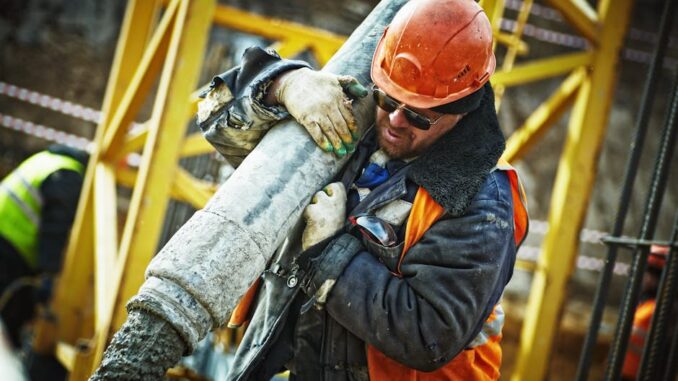
Summary
This article provides a comprehensive guide to pre-construction planning, emphasizing the importance of meticulous preparation. It offers actionable steps, from defining project goals to securing permits, ensuring a smooth and successful construction process. By following these best practices, you can minimize risks, control costs, and achieve project goals.
Focus360 Energy: property compliance services – pre-planning to post-construction. Learn more.
Main Story
Let’s be honest, figuring out construction planning can feel like navigating a ship through a dense fog, you know? But hey, with a solid plan in place, you can turn that daunting task into a much smoother, more predictable journey. Think of pre-construction planning as your project’s compass and map, guiding you from that initial spark of an idea all the way to a successful completion. It’s really the bedrock upon which everything else is built. We’re talking minimizing risks, maximizing efficiency – the whole shebang.
Defining Project Scope and Objectives
First things first, you’ve gotta nail down exactly what you’re building and why. What are the specific needs your project is meant to fulfill? What functionalities are we talking about? A well-defined scope acts like a north star, keeping everyone on the same page and preventing those dreaded (and costly!) deviations down the road. Outline the project’s deliverables, set realistic goals, and establish those all-important Key Performance Indicators (KPIs). Trust me, you’ll thank yourself later.
Budgeting and Cost Estimation
Now, let’s talk money. Developing a realistic budget is non-negotiable. A thorough cost estimation means accounting for everything: materials, labor, equipment, permits… and don’t forget contingencies! Use cost estimation software, look at historical data – whatever it takes to get as accurate as possible. And be prepared to get creative! Exploring alternative materials or making design tweaks can save you a ton and keep you within those budget constraints.
Site Selection and Due Diligence
If you’re starting from scratch with a new construction site, site selection is absolutely key. You need to really dig in (pun intended!) and conduct thorough due diligence. Assess the site’s suitability; things like soil conditions, the environmental impact, zoning regulations, even accessibility. Get those geotechnical engineers and environmental consultants involved. Their expert analysis is invaluable in making sure the site aligns perfectly with what you need for the project. One time, my friend, let’s call him Bob, didn’t do his due diligence and had to get the zoning regulations altered, ended up costing him a fortune.
Design and Planning: Collaboration is Key, seriously!
This is where your project really starts to come to life. Get your architects, engineers, and designers together to develop detailed drawings and specifications. The earlier you get the general contractor involved, the better. This ensures everyone is aligned with both functional and aesthetic goals. I really can’t stress how important it is to create a cohesive design and keeping everything on budget.
Permitting and Regulatory Compliance
The permitting process? Yeah, it can be a real headache, time-consuming and complex, I know. Identify all the necessary permits and approvals from local authorities early on. Make sure your design ticks all the boxes when it comes to building codes, zoning regulations, and environmental requirements. Proactive approach now saves you a ton of potential delays later.
Contractor Selection: Choosing the Right Partner
Okay, this is a big one: selecting the right contractor. Develop a clear selection process, maybe a Request for Qualifications (RFQ) or a Request for Proposals (RFP). Evaluate potential contractors based on experience, reputation, financial stability, and their safety record. A solid contractor partnership? That’s essential for smooth sailing, so choose carefully.
Risk Assessment and Mitigation
Let’s face it, every project has its risks. Do a thorough risk assessment to identify those potential challenges: weather delays, material shortages, unforeseen site conditions. Then, come up with mitigation strategies to minimize the impact on your timeline and budget. Think of it as preparing for the worst, but hoping for the best!
Communication and Collaboration: Keeping Everyone Informed
Communication is absolutely essential when it comes to pre-construction planning. Set up clear communication channels and protocols that include everyone: project owner, designers, contractors, subcontractors, everyone. Regular meetings, progress reports, even collaborative software platforms can help make sure everyone’s on the same page. And that’s what you want, isn’t it?
So, by following these best practices for pre-construction planning, you’re really setting yourself up for success. Remember, meticulous planning isn’t just an expense; it’s an investment. It pays off in spades: reduced risks, better cost control, and a smooth, more predictable construction process. And who doesn’t want that?


Regarding site selection, what strategies beyond geotechnical surveys and environmental impact assessments have you found most effective in anticipating potential long-term challenges related to community integration or infrastructure capacity?
That’s a great point about community integration and infrastructure capacity! Beyond the surveys, engaging directly with the local community through meetings and feedback sessions can provide invaluable insights. Understanding their concerns and needs early on helps ensure smoother long-term integration and highlights potential infrastructure strains we might have missed. Thanks for bringing this up!
Editor: FocusNews.Uk
Thank you to our Sponsor Focus 360 Energy
“Minimizing risks and maximizing efficiency, eh? Sounds like a superhero origin story for project managers! But seriously, what happens when Murphy’s Law throws a wrench in the best-laid plans? Got any disaster recovery tips beyond ‘panic and order more coffee’?”
That’s a great question! Beyond caffeine, a detailed risk mitigation plan is crucial. Regular project reviews, identifying potential roadblocks early, and having backup plans in place can help navigate unexpected challenges. Clear communication keeps everyone informed and prepared to adapt! Thanks for sparking this discussion!
Editor: FocusNews.Uk
Thank you to our Sponsor Focus 360 Energy
Given the importance of contractor selection, what specific metrics beyond price and experience do you weigh most heavily when evaluating potential partners?